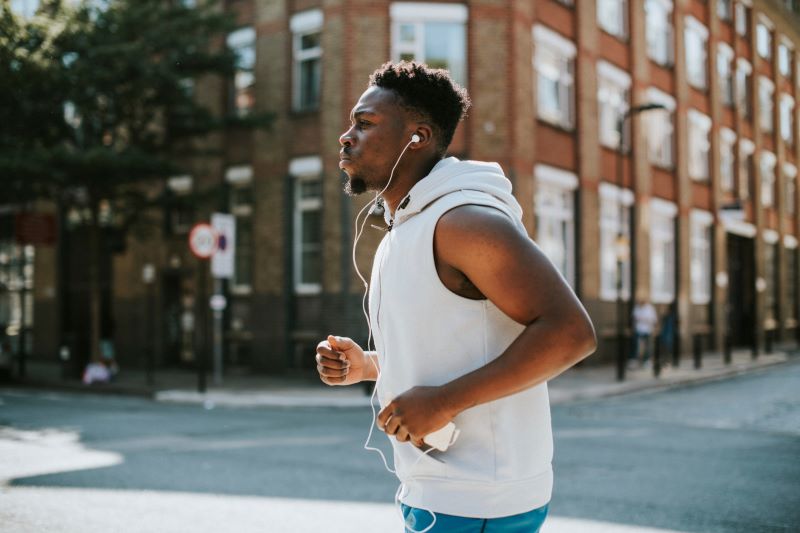How Can I Help My Partner with Sexual Interest/Arousal Disorder?

Sexual Interest/Arousal Disorder (SIAD) is characterized by low sexual interest and arousal, as well as distress or sexuality-related negative emotions. Current prevalence rates show 39% of women report low sexual desire – 30% of which experience sexual distress – and 26% report low sexual arousal. In comparison, prevalence amongst men varies from 1-20% depending on age group. These statistics may suggest that SIAD is more common amongst women.
SIAD may negatively affect couples by influencing relational and sexual satisfaction, or creating barriers in sexual communication. Partners of women with SIAD may also experience difficulties in overall sexual function, furthering the feeling of sexual distress.
Intimacy plays a role in all relationships. There are three components of intimacy. Self-disclosure, or how much in individual shares with their partner; perceived partner disclosure, or how much an individual thinks their partner shares with them; and perceived partner responsiveness, or how much/well an individual thinks their partner listens and understands them.
Researchers from Canada recently studied the role of intimacy in couples coping with SIAD, hoping to determine how the three components of intimacy intersect with sexual well-being. They also looked into how sexually and gender diverse (SGD) couples with SIAD may have different experiences that cisgender and heterosexual couples.
Participants from the United States and Canada submitted survey responses (263 couples) which explored all components of intimacy, as well as sexual function, distress, and satisfaction. SIAD diagnoses were confirmed by a mental health professional prior to survey dissemination.
How Do You Perceive Your Partner’s Responsiveness?
The study found that how responsive (understanding and communicative) the individual with SIAD is perceived to be by their partner matters for both people in the relationship. For example, if the partner without SIAD perceives the individual with SIAD as more responsive, then both partners may experience greater sexual well-being and satisfaction.
Additionally, the partner without SIAD was shown to experience less sexual distress and better sexual function when they perceived their partner to be more responsive.
Sexual and Gender Diversity Makes a Difference
In SGD couples, when the partner with SIAD felt their partner was responsive, they also reported better sexual function. In heterosexual and cisgender couples, this was not the case.
In heterosexual, cisgender couples, the pattern was flipped. When the partner without SIAD felt their SIAD partner was responsive, the SIAD partner reported better sexual function. This wasn’t true for SGD couples.
Conclusion
Overall, it appears perceived partner responsiveness is beneficial to both partners’ sexual well-being in a couple coping with SIAD. If you or a loved one may be experiencing SIAD, it might be beneficial to see a mental or sexual health professional for help receiving therapy, medications or hormonal treatments; and finding other helpful coping methods or lifestyle changes.
Advice from clinicians may include introducing open communication about sex and your relationship, couples counseling or therapy, and even things like safe words. Intimacy is about more than just sex, and women with SIAD may benefit from an emotional connection to strengthen the physical one with their partner without SIAD.
Resources
Belu, C. F., Corsini-Munt, S., Dubé, J. P., Wang, G. A., & Rosen, N. O. (2023). Partner responses to low desire among couples coping with male hypoactive sexual desire disorder and associations with sexual well-being. The Journal of Sexual Medicine, 20(7), 955–964. https://doi.org/10.1093/jsxmed/qdad069
Perrier Léonard, D., Rosen, N. O., Bigras, N., Massé-Pfister, M., & Bergeron, S. (2025). Intimacy and sexual well-being in couples coping with sexual interest/arousal disorder: The importance of perceived partner responsiveness. The Journal of Sexual Medicine, 22(7), 1093–1105. https://doi.org/10.1093/jsxmed/qdaf119
You may also be interested in...
Other Popular Articles

What Is Jelqing, and Does It Actually Work?
The term “jelqing” refers to a set of penis stretching exercises that some believe can make the penis bigger. Although the practice has gained attention and popularity in blogs and internet forums in recent years, there is no scientific evidence that it is an effective way to permanently increase the size of one’s penis. In fact, in some cases, jelqing may actually cause damage to the penis, so it is a good idea to get all the facts before setting off to try it.

What Is the Average Penis Size?
If you have ever wondered how your penis compares to others in terms of size, you are not alone. Many men are curious to know how their penises stack up compared to the average. Unfortunately, general curiosity can sometimes give way to full-on obsession and anxiety about penis size. This can be an unhealthy and often unnecessary fixation, especially because most men who think their penises are too small have perfectly normal-sized penises.

What Is Sensate Focus and How Does It Work?
Sensate focus is a technique used to improve intimacy and communication between partners around sex, reduce sexual performance anxiety, and shift away from ingrained, goal-oriented sexual patterns that may not be serving a couple.

Can Sex Reduce Menstrual Cramps?
The SMSNA periodically receives and publishes ‘guest editorials.’ The current article was submitted by Mia Barnes, a freelance writer and researcher who specializes in women's health, wellness, and healthy living. She is the Founder and Editor-in-Chief of Body+Mind Magazine.
Having sex while you experience menstrual cramps is healthy and can provide significant benefits. While it might not be the first activity that comes to mind when your PMS or period cramping begins, many people enjoy sex to reduce menstrual cramps, experience increased pleasure and benefit from other advantages. Learn more about having sex while menstrual cramps are happening and how it can help your body.

How Long Does It Take the Average Man to Ejaculate?
On average, it takes a man between 5 to 7 minutes to orgasm and ejaculate during sexual intercourse.

The Effect of Regular Aerobic Exercise on Erectile Function
Erectile dysfunction (ED) is the inability to achieve or maintain an erection sufficient for satisfactory sexual activity. As men get older, their erectile functioning may naturally decline due to changes in testosterone levels, cardiovascular functioning, and the potential development of other chronic medical conditions that become more common with age.
You are prohibited from using or uploading content you accessed through this website into external applications, bots, software, or websites, including those using artificial intelligence technologies and infrastructure, including deep learning, machine learning and large language models and generative AI.

